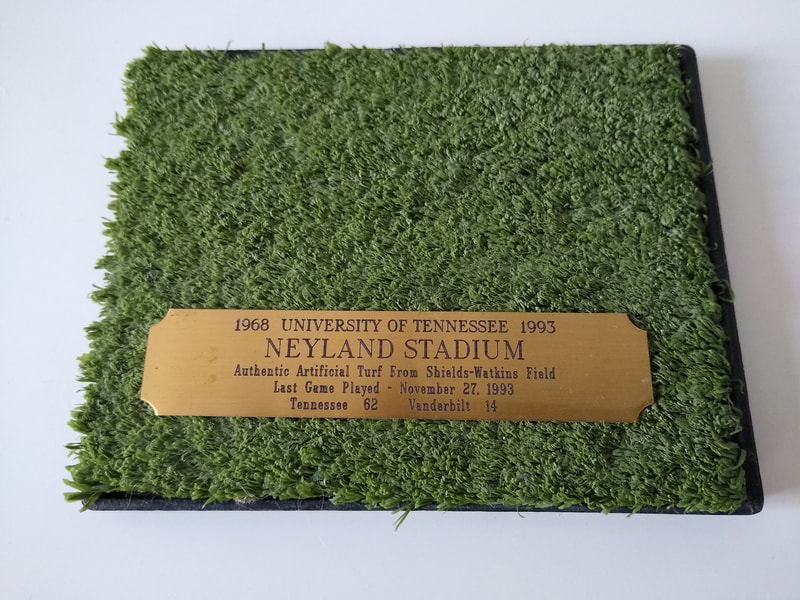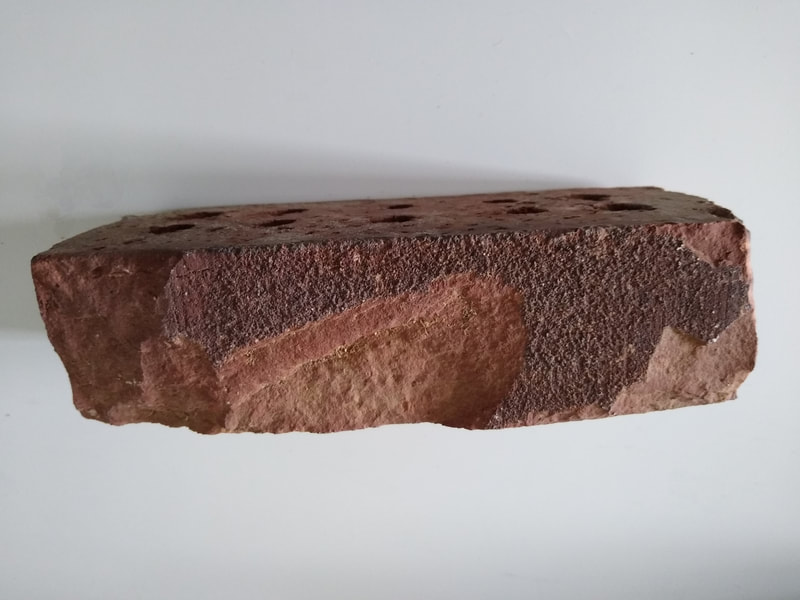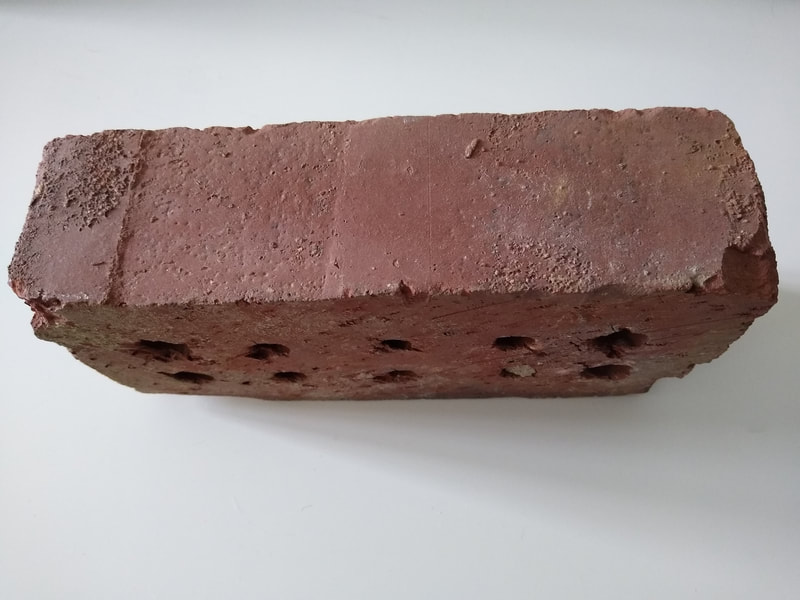University Grounds
Menu
University grounds
|
After my last post on the College of Oak Ridge, I was talking with a friend of mine who remarked that collecting things from a college that never really was and a place to which I have no personal connection is kind of odd. Two things came to mind. First, he's right, it is an odd thing to collect in some sense but it does fit with my interests in things higher education. Second, he happens to be a collector of science fiction and comic book things so he has no room to judge! Anyway, he asked about the things I have collected over the years that are related to the places I where have attended school or worked. As it happens, except for my current institution (the University of Memphis) I do have some unique items for each of the institutions I have attended and worked. After we had chatted about them, I thought I would share two that are rather unique, including one that I imagine few people have. Readers of the blog know that I did my undergraduate and master's work at the University of Tennessee in Knoxville. Football is king at UT and Neyland Stadium is the king's castle. It is a great venue for football. Although I have not been to a game there since August 30, 2003 when the Vols beat the Fresno State Bulldogs 24 to 6, it still remains the top of my list for college football stadiums. It is a storied place and the history of it should wait for another post. The stadium went from grass to Astroturf for the 1968 season. The Wikipedia page says that it was one of the first stadiums to move to artificial turf, but several other outlets say it was the first to have the turf actually installed. Regardless, the Vols took to the field on September 14, 1968 for their first home game on the stuff, tying the Georgia Bulldogs 17 to 17. All of the games I attended as an undergraduate and half of those as a master's student were on the Astroturf. The final game played on it was a November 27, 1993 game where the Vols blitzed the Vanderbilt Commodores 62 to 14. The artificial turf was ripped out the next spring and in the fall of 1994 the Big Orange took to the field to play on natural grass for the first time in 36 years. It remains a natural playing surface today. After they ripped out the Astroturf, the athletics department did what businesses like that do: they sold the turf as collectibles and made a pretty penny off it. Of course, I had to have a piece. I have no recollection what these things sold for or how many they sold. I seem to remember they came in different sizes. The one I have is about 4 inches tall by 5 inches wide. I looked on eBay today and found one just like this on sale for $225! I would have never thought it would go for that amount. What surprised me then, and now, is the condition of the turf. I know there was likely something under it that is not part of what I have today, but the turf itself is maybe a centimeter or 0.39 inches in height. It is seriously folded over to one side. If you look closely at the photo, you can see the strands of the turf bending to the left. It probably looked quite different when it debuted in 1968, but by 1994 when I got a hold of a piece it was in rough shape. It could not have been too pleasant to play and get tackled on! This sits on a bookshelf in my home office. The next is something that few people likely have as they were never sold. I was visiting campus in the late spring/early summer of 2005 with my now wife. The old Glocker Business Administration Building was being razed to make way for a new structure, the James A. Haslam II Business Building. Although they kept the front of the building (the part that faces Volunteer Boulevard), the rest was headed to the scrapheap of history. A large portion of the building was still standing during my visit. It was the weekend and there was no work going on at the site. The area was fenced off, but a few bricks were close to the Andy Holt Avenue side of the site (the area is now a pedestrian mall). I lifted the fence and grabbed a couple of bricks until I found one that was still mostly intact. This is it below. The first photo is the side of the brick that faced outwards. You can tell by the weathered nature of the bits that are still intact. I also keep this in my home office as a memento of days gone by. Although I was not a business major, I did have a class in the lecture hall on the first floor of Glocker. There were computer labs in the basement that I used quite a bit. The first time I used an Apple Macintosh was in that building in the fall 1988. I had previously only used PCs and the difference in how easy the Mac was to use by comparison was astounding! It was also the first place I ever used email. I had to request an email account, and then go through a training session to be able to use it. We had a limit of how many bits we could use per month and we were actually advised not to use it unless we had something important to email about!. In the basement were old Vax computers which were, at the time, the only ones available to students for email use. I don't remember the manufacturer, but they were modular units with a screen and keyboard together in one unit. In 2002, I was able to go back to UT along with my good friend and mentor Brian McMahon. We gave a guest lecture in a master's-level Rehabilitation Counseling course being taught by Dr. James H. Miller. Dr. Miller was my major professor in my master's program and chaired my master's thesis. The very first publication I had as a doctoral student was based on that work and he and I share authorship of it. It was really incredible to be standing there in Glocker giving that lecture to students of my alma mater with two men who shaped my life more than either of them could ever know. Having this brick is not only special because it is a piece of lost UT history, but because of that visit and my time there as a student. Glocker opened in 1952 and was named in honor of Theodore Glocker who came to UT in 1914 to head its newly created School of Commerce (as business was named then). Commerce was not totally independent; it was a unit of the College of Liberal Arts (now the College of Arts and Sciences) until 1938. Dr. Glocker had received his Ph.D. from Johns Hopkins in 1907. He stayed at Hopkins after graduating for a year before moving to Boston to teach at a Harvard-affiliated School of Social Work. He then moved to a faculty position at Washington University in St. Louis prior to moving to Knoxville. When Commerce transitioned to an independent unit becoming the College of Business Administration, he played a big role in that achievement. It is a shame the building had to go. It was too small for the current era, and I am sure had loads of problems. None the less, it was a great piece of architecture and had some unique mid-century elements on the inside. I understand why the new building carries the Haslam name. It was thanks in large part to a donation from Haslam that the university was able to construct the new facility. But I hate when the names of places meant to honor the dedication and resolve of those in the past are simply deleted. I hope UT and the College of Business finds an equivalent way to honor Dr. Glocker. I have other things in my collection of old collegiate things and it seems I am slowly adding to it over time. My buddy said something about both of our collections as we ended our call that stood out to me. Whether it was some piece of science fiction history in his collection, or some odd ball university thing in mine, we have acquired many of our pieces by buying them. No doubt someone before us was interested in the topic and either acquired it when new or bought it themselves from a previous collector. He imagined some of it came to be for sale because the original owners either needed some money and decided to part with a particular item or because they passed and their family was getting rid of what they viewed as junk. At some point, I imagine my family may do the same unless I find a home for my collection before I head the way of the Dodo. For now, I am happy to have these two nice pieces to remind me of earlier times.
0 Comments
Your comment will be posted after it is approved.
Leave a Reply. |
AboutUniversity Grounds is a blog about college and university campuses, their buildings and grounds, and the people who live and work on them. Archives
May 2024
Australia
Victoria University of Melbourne Great Britain Glasgow College of Art University of Glasgow United States Alabama University of Alabama in Huntsville Arkansas Arkansas State University Mid-South California California State University, Fresno University of California, Irvine (1999) Colorado Illiff School of Theology University of Denver Indiana Indiana U Southeast Graduate Center Kentucky Murray State University Mississippi Blue Mountain College Millsaps College Mississippi Industrial College Mississippi State University Mississippi University for Women Northwest Mississippi CC Rust College University of Mississippi U of Mississippi Medical Center Missouri Barnes Jewish College Goldfarb SON Fontbonne University Saint Louis University Montana Montana State University North Carolina NC State University Bell Tower University of North Carolina Chapel Hill Tennessee Baptist Health Sciences University College of Oak Ridge Freed-Hardeman University Jackson State Community College Lane College Memphis College of Art Rhodes College Southern College of Optometry Southwest Tennessee CC Union Ave Southwest Tennessee CC Macon Cove Union University University of Memphis University of Memphis Park Ave University of Memphis, Lambuth University of Tennessee HSC University of West Tennessee Texas Texas Tech University UTSA Downtown Utah University of Utah Westminster College Virginia Virginia Tech |




